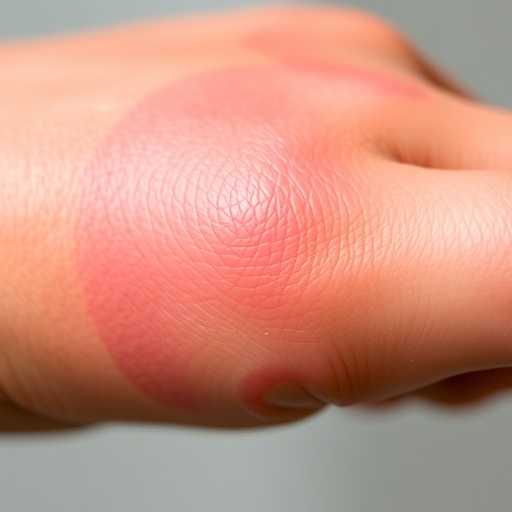BIRMINGHAM, Ala. – Adverse life events are a known and predominant risk factor for postpartum depression in women after delivery of their baby. Furthermore, the postpartum depression in women who have experienced adverse life events tends to be refractory to treatment.

Credit: UAB
BIRMINGHAM, Ala. – Adverse life events are a known and predominant risk factor for postpartum depression in women after delivery of their baby. Furthermore, the postpartum depression in women who have experienced adverse life events tends to be refractory to treatment.
In a study using a mouse model and human subjects, researchers from the University of Alabama at Birmingham and Johns Hopkins Medicine show that stress from adolescent social isolation in mice elicits a prolonged elevation of corticosterone levels and glucocorticoid signaling, which in turn results in long-lasting postpartum behavioral changes indicative of depression. Importantly for clinically relevant biology, this was associated with prolonged dysregulation of the neuro-hormone system that manages stress, called the hypothalamic-pituitary-adrenal, or HPA, axis.
Similar to the mouse results, the researchers found that childhood or adolescent stress significantly impacted HPA axis dysregulation and postpartum depression in a study of 116 women.
“We believe that the discovery in the present study sheds light on the relationship between adolescent stress and postpartum behavioral changes, bridging a major knowledge gap in the understanding of postpartum depression,” said Minae Niwa, Ph.D., an associate professor in the UAB Department of Psychiatry and Behavioral Neurobiology.
“Most importantly, we demonstrated that a short-term, one-week, postdelivery treatment against this pathological mechanism was sufficient to block the behavioral changes in stressed mouse dams, whereas other medicines currently used for postpartum depression in the clinical setting are ineffective,” Niwa said. The effective treatment used a glucocorticoid receptor antagonist, a drug not currently used to treat postpartum depression. This antagonist, which blocks the effects of elevated glucocorticoids (cortisol in humans and corticosterone in rodents), could be a novel treatment option for postpartum depression.
Niwa and Akira Sawa, M.D., Ph.D., director of the Johns Hopkins Schizophrenia Center and professor in the Johns Hopkins University School of Medicine, are co-corresponding authors of the study, published in Nature Mental Health.
The current first-line pharmacological treatment for postpartum depression is selective serotonin uptake inhibitors; but only half of patients respond to those, indicating a need for novel pharmacological treatments. Furthermore, symptomatic relief only appears several weeks after initial medication. In the most severe and resistant cases, women can receive IV infusions of drugs that target GABAA receptors. However, these calming infusions cost more than $34,000 for a single course and often require hospitalization. In addition, the FDA recently approved oral administration; but the need for follow-up, long-term remission and insurance coverage are not clear.
Postpartum depression is estimated to occur in 7 percent to 20 percent of all women, most commonly within six weeks of giving birth. Symptoms include feelings of sadness, anxiety and fatigue, and can make it difficult to complete basic self-care tasks and care for the new baby.
The stress in the mouse model study was social isolation during adolescence, in contrast to the normal group housing for mice. Stressed and unstressed mice were bred or left virgin, creating four experimental groups. Compared to the stressed and unstressed virgins and the unstressed dams, the stressed mothers at seven days postpartum showed decreased social communication, increased immobility and a decreased sucrose preference, all considered markers for depression. These traits persisted for at least three weeks after delivery.
In a second and most critical step, the researchers tested plasma levels of several hormones and found the level of corticosterone — a stress response hormone — was increased during pregnancy and delivery in mothers both with and without adverse early life experiences. However, corticosterone levels in unstressed mothers decreased to normal levels after delivery, while the levels in stressed mothers with adverse early life experiences remained high for one to three weeks after birth. This suggests a correlation between prolonged postdelivery elevation of corticosterone and behavioral changes in postpartum mice who experienced social isolation in adolescence.
The novelty of this study, researchers say, lies in discovering and defining the role and mechanism of the HPA axis and glucocorticoid signaling in the context of postpartum depression.
Co-authors with Niwa and Sawa in the study, “Prolonged HPA axis dysregulation in postpartum depression associated with adverse early life experiences: a cross-species translational study,” are Sedona Lockhart, Daniel J. Wood, Kun Yang, Gary S. Wand and Jennifer L. Payne, Johns Hopkins University School of Medicine; and Jose Francis-Oliveira, Kyohei Kin, Adeel Ahmed and Shin-ichi Kano, UAB Department of Psychiatry and Behavioral Neurobiology.
Support came from National Institutes of Health grants MH092443, MH094268, K99MH-094408, MH105660, MH107730, DA040127 and MH116869; and the Brain and Behavior Research Foundation.
At UAB, Psychiatry and Behavioral Neurobiology is a department in the Marnix E. Heersink School of Medicine.
Journal
Nature Mental Health
DOI
10.1038/s44220-024-00217-1
Method of Research
Experimental study
Subject of Research
Animals
Article Title
Prolonged HPA axis dysregulation in postpartum depression associated with adverse early life experiences: a cross-species translational study
Article Publication Date
11-Apr-2024
COI Statement
None




